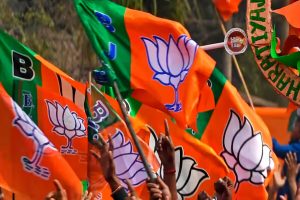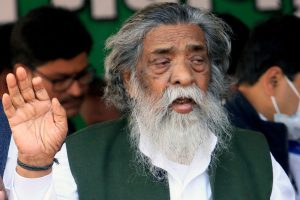The landslide verdict in Uttar Pradesh has outfoxed most political pundits. The reportage of the elections and predictions that accompanied it shows much of Indian political journalism seems to be living in the “post-truth” world.
The Oxford dictionary designated “post-truth” as the word of 2016 ~ an adjective which means “relating to circumstances in which objective facts are less influential in shaping public opinion than emotional appeals.”
Advertisement
How ridiculously off the mark the predictions for UP were. What went wrong? Is it the failure of news gathering and data from the ground, a duty which the modern media is increasingly abdicating? Is it the over-dependence on social media which political journalists seem to spend a disproportionate amount of time on? Or is it what American journalist, Sean Trende described in the wake of the Brexit reportage which too was off the mark, as the “unthinkability bias” ~ not being able to report the truth simply because you wish it were otherwise.
That unthinkability bias could not have been in greater evidence than in the coverage of the US elections last year when mainstream papers such as the New York Times strongly suggested that the odds in favour of Hilary Clinton were close to 100 per cent.
Among the analysis that were published in the aftermath of the Trump election, was that political experts lack diversity as a group and tend to reinforce their own views. Social media tends to amplify that echo chamber where like-minded people tell one another what they want to hear and do not see the need to engage with the “other”.
That is deeply damaging for media credibility, for free speech and for democracy itself.
The social media gained popularity in India about the time two major media exposes took place in 2010-2011. One was the Paid News report which exposed the involvement of several newspapers in the news for money racket, particularly during election time.
The second was the Radia tapes expose which released tapped phone conversations suggesting that top journalists were brokering deals between politicians and corporate houses. Journalistic credibility was at its nadir.
That is when social media offered an alternative platform for people to vent their ire and unshackle themselves from the monopoly of the mainstream media. While social media must be credited with democratising free speech like never before, it is by no means a substitute to the mainstream or conventional media.
Social media has shown its grave limitations ~ here news gets blurred with opinion, sources cannot be verified and there is no fine line between citizen and journalist. No one can be held to account. The other difficulty with social media is the absence of plurality of opinion and diversity of information, so essential in a democracy.
The media was famously regarded as the “marketplace of ideas” where we must engage with those whose thoughts we disagree with. The social media can be deeply polarising and insular because we need to see and hear only those with whom we are ideologically aligned. There is no real contest of ideas because one is preaching to the already converted. This reinforces an Us vs Them, rather than facilitating an engagement with the “other”.
When a substantial section of the urban youth depend only on social media for news and opinion, they may be turning their backs on the diversity of news and opinion the old-fashioned newspaper provided. But the more dangerous trend is that the mainstream media depends on the social media for news-feeds rather than the other way around. This is not just the easy way out because it saves it the time, trouble and expense of independent news gathering but also a grave dereliction of duty because it denies the public access to credible, truthful information. This is possibly what explains the complete disconnect between political pundits and the ground realities in Uttar Pradesh.
The old-fashioned newspaper may have lost some currency in the wake of the popularity of the social media. But this is only because it has allowed itself to. There is simply no substitute for the credible, truthful, accountable media and we need it like never before to sift the truth from untruths and half-truths and the grain from the chaff.
Although under our Constitution, the media does not enjoy any higher right to free speech than the ordinary citizen, its freedoms have been staunchly defended by our courts because the media is regarded as a “trustee of the public” determining what ordinary people see or do not see, what they know and do not know. Citizens may voice their views but it is for the media to collect facts, a responsibility that it cannot shrug off or outsource to the citizen. The citizen can turn journalist but the converse is not true. The journalist owes professional duties to the public and must be held to account unlike any other citizen.
Amidst the clamour and cacophony of the social media and all the blur between news and fake news, we need the solid, credible media to reassert itself with independent, objective news gathering, shorn of its “unthinkability bias”. This is now a universal truth that needs to be acknowledged after Brexit, Trump and most recently, UP.
The writer is Advocate, Supreme Court of India and author, Facets of Media Law











